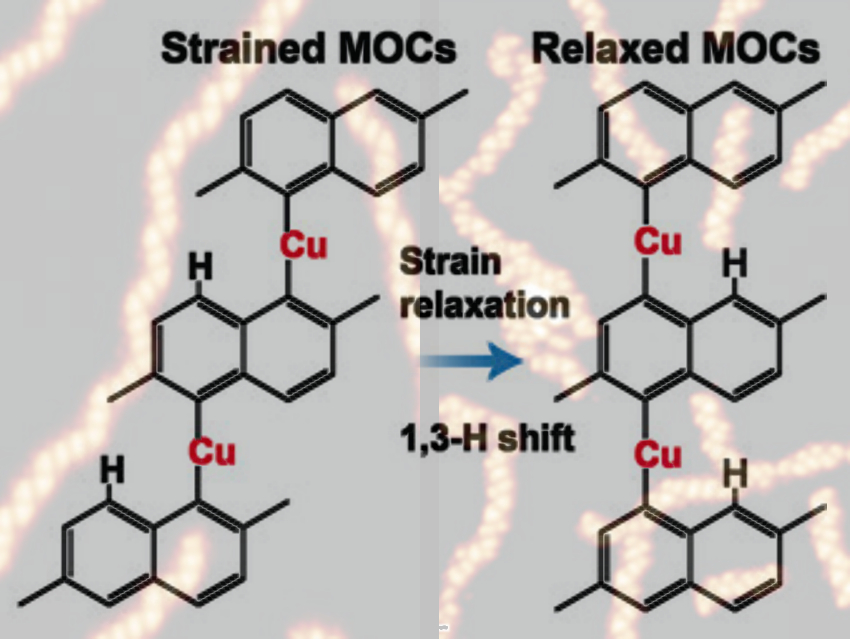On‐surface synthesis of functional nanomaterials has great potential for creating atomically precise functional nanostructures with tailored electronic and magnetic properties. Using mechanical strain to steer chemical reactions creates new possibilities for the solution‐ or solid‐phase synthesis of functional molecules and materials. However, this strategy is usually not easy to apply in the bottom‐up, on‐surface synthesis of well‐defined nanostructures.
Jiong Lu and Jishan Wu, National University of Singapore, Pavel Jelínek, Czech Academy of Sciences, Prague, and Palacký University, Olomouc, both Czech Republic, and colleagues have discovered a strain-induced isomerization mechanism in 1D metal–organic chains (MOCs). A 1,5-dibromo-2,6-dimethylnaphthalene (DBDMN) precursor was used to fabricate 1D MOCs on a catalytically active Cu(111) surface. The resulting MOCs undergo skeletal rearrangements (pictured) after prolonged annealing at room temperature.
Non-contact atomic force microscopy (nc-AFM) imaging with a carbon-monoxide-functionalized tip was used to visualize the structural changes. The isomerization occurs through the activation of C–H bonds and a simultaneous rearrangement of the coordination bonds. The relief of strain in the MOCs is a driving force for their isomeric transformation. The researchers believe that such strain-induced structural rearrangements in 1D systems could be a new tool for the on-surface synthesis of functional materials.
- Strain-Induced Isomerization in One-Dimensional Metal-Organic Chains,
Mykola Telychko, Jie Su, Aurelio Gallardo, Yanwei Gu, Jesús I. Mendieta-Moreno, Dongchen Qi, Anton Tadich, Shaotang Song, Pin Lyu, Zhizhan Qiu, Hanyan Fang, Ming Joo Koh, Jishan Wu, Pavel Jelínek, Jiong Lu,
Angew. Chem. Int. Ed. 2019.
https://doi.org/10.1002/anie.201909074



